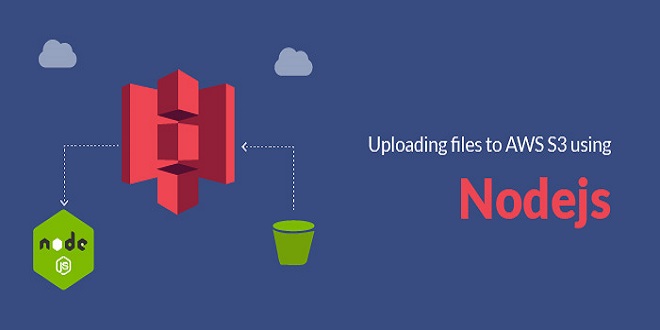Offloading Application Servers – Upload Files to AWS S3 using Node.Js

Many people who live in the twenty-first Century love to call it the age of technology. Nearly everything we do is digitalized today and done on a network that connects locally or globally. Web apps and software are a large part of this. Without web hosting, the files can’t be run (images, invoices, etc.). The traditional method of storing files was to save them on the server’s Hard Disk Drive. However, this would have some limitations, such as the inability to scale up or being forced to allocate space before use, and pricing that is much higher than normal.
It is obvious that requesting large amounts of images will put strain on the server. AWS S3 and Google Drive are great examples of cloud storage providers. AWS S3 stands for Amazon Web Services – Simple Storage Service. This storage system is similar to google drive, but you only pay for the files that you use. The decision about whether to upload a document to S3 Node Javas, or use Google Drive is up to you. The steps to get from the former to the latter are easy since it is so simple.
Prepare the Environment
First, log in to AWS Management Console and generate the Security Key. Next, click on the username to create a new access key under Access Keys. You have the option of copying the Secret Access Key or Access Key ID from the window, or downloading it as a.csv file.
Create an S3 Bucket
The Management Console will allow you to create an S3 bucket. To do this, select the S3 service option from the service menu. Once the bucket is created, you will need to give it a name and specify the location where it will be hosted. It is a smart decision to choose the area closest to your users as this will ensure a better activity. The name that you choose must be unique. The installation wizard will guide you through the configuration of permissions and settings. This will make the process easy. You can upload files to S3 Node with no problems.
Next comes implementation
This part can be skipped if you’ve already created an S3 bucket. But if not, it’s your chance. Create one in your project directory. Next, you will need to implement the file upload functionality. If you wish to access your S3 Bucket, and the fs module which allows you to read files from your PC, make sure to note that you have to import the AWS SDK library into a new file. S3’s multi-regional hosting makes uploading files into S3 Node Js easy, with minimal delay.
The mystery of Gorlock the Destroyer‘s real name has fascinated many. Historians, scholars, and enthusiasts have long sought the truth. This quest reveals intriguing layers of history and myth.




